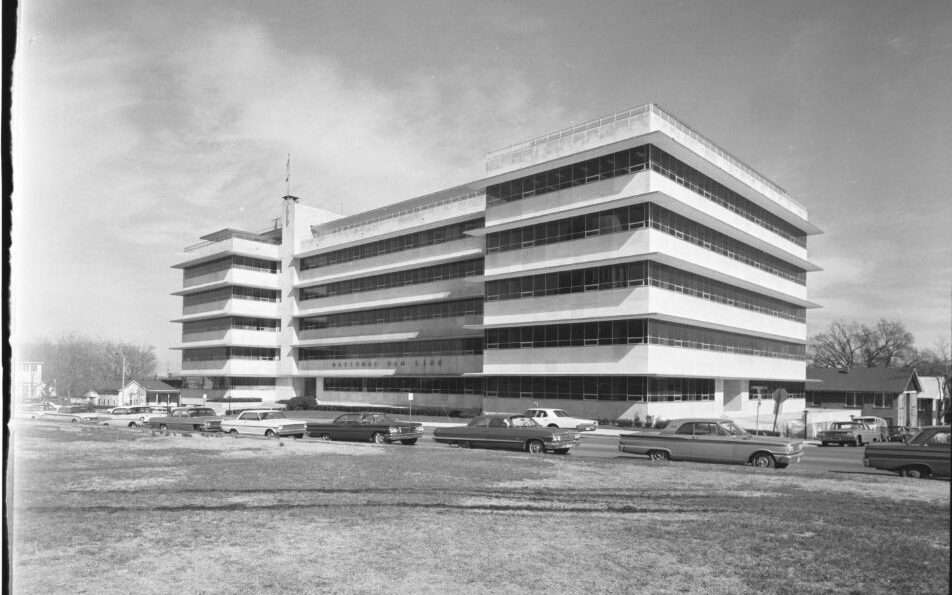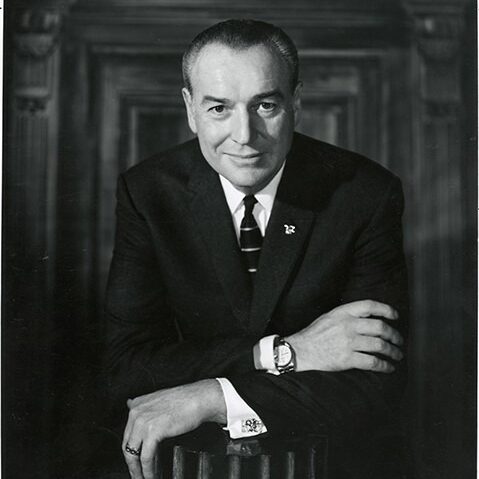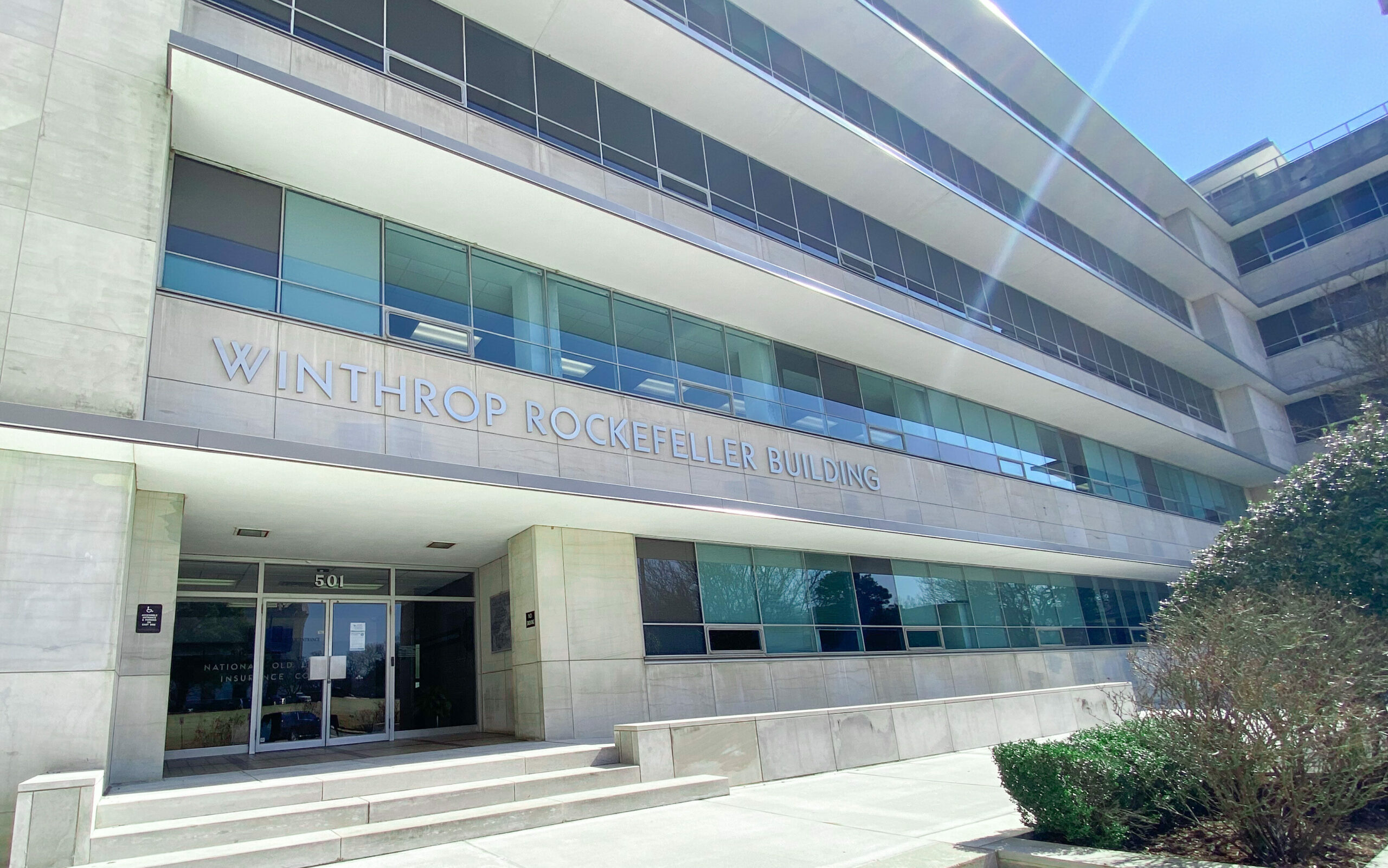Written by Annie Perkins
November 5, 2021
The Winthrop Rockefeller Building has been the home base to the Department of Transformation and Shared Services (TSS) since our founding in 2019. The building has seen many tenants come and go over its 66-year lifespan, and its rich history makes us wish that “walls could talk.” As we dove into the details of The Rockefeller Building, we learned a lot about its fascinating past. Here’s the story of the Rockefeller Building that you probably didn’t know.
THE BEGINNINGS
In 1926, the National Old Line Insurance Company was founded and in the following years, saw so much success that the company outgrew its original two locations. This led to the purchase of several lots on the east side of Woodlane Street across from the State Capitol, where we are today. Little Rock architect Joseph Johnson, who designed over 385 buildings across the state of Arkansas, was commissioned to design the new building. The new National Old Line Insurance Building was completed in 1955 and ended up being his most well-known design.

THE CONSTRUCTION

The original structure was a striking International Style design that was composed of a six-story tower with a basement at the corner of Capital and Woodlane and a three-story wing extending south. The exterior of the building featured rows of glass below concrete sunshades and Alabama limestone, the same material used on the State Capitol. Due to even more growth, in 1965, the square footage doubled by adding a matching tower on the south side and three additional floors in the center section. This transformed the building into the structure we are familiar with today, and the design was seamless enough that most are unaware that it was constructed in two different phases.
WINTHROP ROCKEFELLER
Winthrop Rockefeller was elected governor in 1966 and served until 1971. While the Governor’s Mansion was undergoing renovations during his first months in office, Governor Rockefeller lived on the sixth floor of the building which, at the time, was a penthouse featuring three bedrooms, three-and-a-half bathrooms, and multiple balconies.

THE LATER YEARS
The success of National Old Line attracted the attention of larger companies and it eventually merged with AEGON Insurance who continued to operate out of the building until 1997 when the property was sold to the Arkansas Teachers Retirement System. A few years later, the Arkansas Building Authority (currently the Division of Building Authority) purchased the property and moved into part of the building, leasing the remainder of the building to other state agencies. In 2013, the Arkansas State University System leased the sixth floor of the building to house their main offices. They redesigned and restored the space but made a priority of maintaining as much of the mid-century character as possible. The Department of Transformation and Shared Services made the Rockefeller Building their home in October 2019.
THE LEGACY

The building’s name was changed from the National Old Line Insurance Building to the 501 Building because of its address at 501 Woodlane Street. In 2019, Act 1086 passed, officially changing the name yet again to the Winthrop Rockefeller Building as a nod to the time Governor Winthrop Rockefeller resided on location. It is now on the National Register of Historic Places because of its local significance and to protect its original architecture. The Rockefeller Building has seen generations come and go and has solidified its place in history.
The information in this post was pulled from research done by Mason Toms. For a more in-depth look at the historic Winthrop Rockefeller Building, click here to read his original post in the Arkansas Modernism Facebook group.

